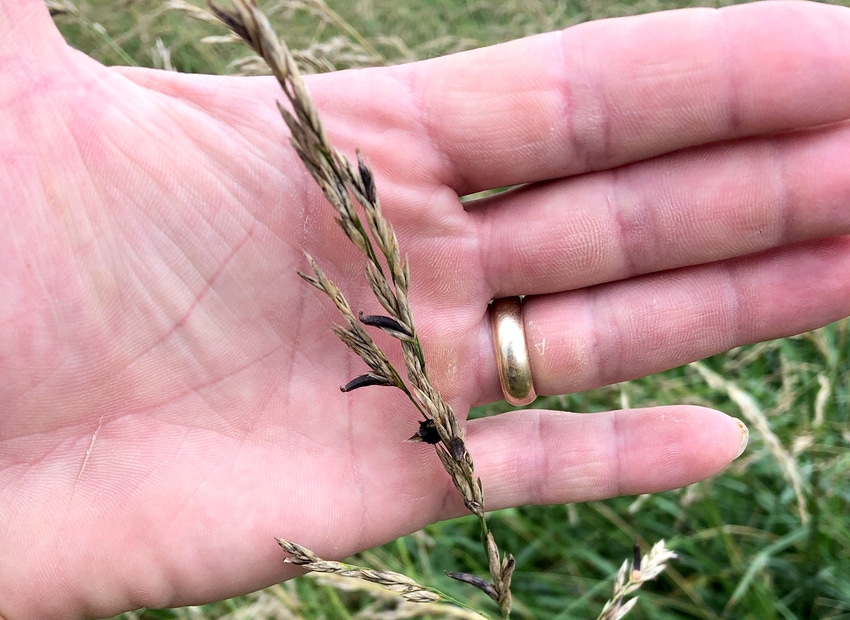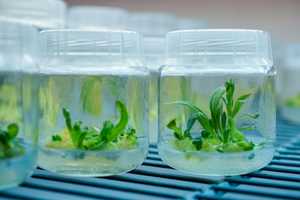Fungal disease of seed heads on grasses and cereal crops can cause severe illness and death in livestock.
June 25, 2020

University of Missouri extension specialists are warning livestock producers to be on the lookout for ergot this year. A cool, cloudy and wet spring with a prolonged flowering period was followed by high temperatures and humidity, setting the stage for infection, said Tim Schnakenberg, field specialist in agronomy with the university.
Ergot is a fungal disease of the seed heads on grasses and cereal crops. Ergot bodies in seed heads produce toxic alkaloids that can cause severe illness and death in cattle, horses, small ruminants, llamas, alpacas and swine. People also can become ill if they eat infected rye or wheat.
Wind transfers overwintering ergot bodies (sclerotia) in the soil to susceptible plants, including tall fescue, orchardgrass, smooth bromegrass, timothy, perennial ryegrass, millet, rye, triticale, wheat, oats and barley, Schnakenberg said. Ergot can also infect native warm-season grasses.
Affected cattle may become excitable and show signs that mimic respiratory disease. In severe cases, reduced blood flow can lead to gangrene, irregular blood temperatures, reproductive failure and abortion.
Schnakenberg said farmers and ranchers should watch pastures for infection, especially in tall fescue fields. Infected seed heads initially look like yellow honeydew. This develops into darkened, hornlike ergot bodies that are up to 10 times the size of the grain and look like mouse droppings.
Producers should immediately move livestock from infected pastures. Another option is to clip pastures, which lets infected seeds drop to the ground, where cattle are less apt to eat them. Dilute infected harvested hay with other feed.
Producers frequently ask Schnakenberg if this is the same toxin produced internally by an endophyte in Kentucky 31 tall fescue. The source of the infection is very different, but both produce ergot alkaloids, he said, adding, “The toxin infection with ergot is much greater compared to fescue toxicosis, leading to quicker and more pronounced symptoms in cattle.”
Novel-endophyte fescue is not immune to ergot problems. Internal sources of ergot alkaloids are reduced but the external infection source from ergot can be just as toxic, Schnakenberg said.
You May Also Like



